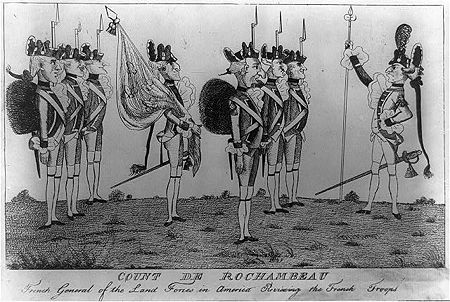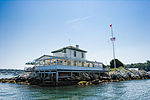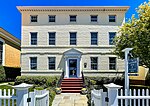Rochambeau Monument (Newport, Rhode Island)

Rochambeau Statue and Memorial is a monument to French nobleman and General Jean-Baptiste Donatien de Vimeur, comte de Rochambeau, who was a key commander of the French forces who assisted the Continental Army during the American Revolutionary War. The monument is located on the waterfront in King Park, along the southern edge of Newport Harbor, near Brenton Cove and Fort Adams state park and was erected in 1934. This is the 3rd replica of the Rochambeau Statue in Lafayette Park, Washington DC, which was created by renowned French sculptor Fernand Harmar. It was donated by A. Kingsley Macomber. The statue was restored in 2019 by the fundraising efforts of members of the Alliance Française of Newport.
Excerpt from the Wikipedia article Rochambeau Monument (Newport, Rhode Island) (License: CC BY-SA 3.0, Authors, Images).Rochambeau Monument (Newport, Rhode Island)
Wellington Avenue, Newport
Geographical coordinates (GPS) Address External links Nearby Places Show on map
Geographical coordinates (GPS)
| Latitude | Longitude |
|---|---|
| N 41.476885 ° | E -71.321664 ° |
Address
Rochambeau Statue and Monument
Wellington Avenue
02840 Newport
Rhode Island, United States
Open on Google Maps








